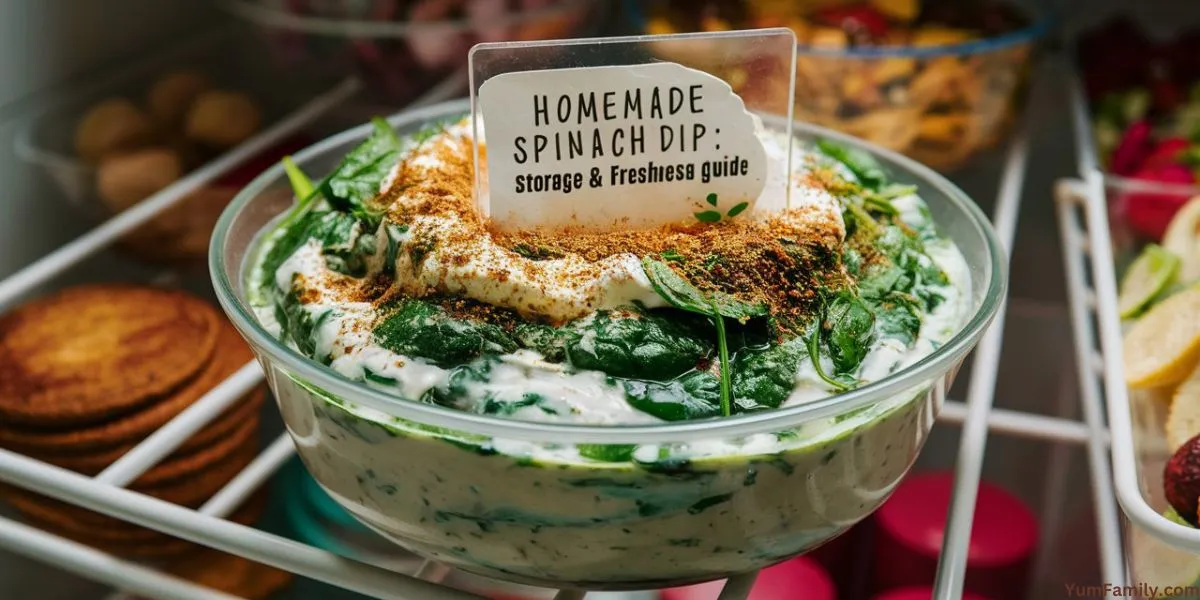How Long Does Homemade Spinach Dip Last in the Refrigerator?
Homemade spinach dip is a delicious and versatile appetizer enjoyed by many. However, understanding how to properly store it and knowing its shelf life is essential to ensure it remains safe and tasty. This comprehensive guide will cover everything you need to know about the storage, freshness, and best practices for keeping homemade spinach dip in the refrigerator.
Homemade spinach dip is a popular appetizer for gatherings and family meals. Proper storage is essential to preserve its freshness and safety. This guide will cover the shelf life of homemade spinach dip in the refrigerator, provide storage tips, and identify signs of spoilage.
Homemade spinach dip typically consists of spinach, sour cream, mayonnaise, and various seasonings. Its freshness depends on the quality of the ingredients and the preparation method. Ensuring that each component is fresh before combining them is essential to prolong the dip’s shelf life.
Storage Guidelines
Refrigerator Storage
To maintain the freshness of homemade spinach dip, store it in the refrigerator at a temperature below 40°F (4°C). This slows bacterial growth and keeps the dip safe to eat.
Container Choice
Use airtight containers to store spinach dip. This helps prevent the dip from absorbing other odors and flavors in the refrigerator. Glass containers with tight-fitting lids are ideal.
Freezing Options
While spinach dip can be frozen, it may affect its texture and taste. If you choose to freeze it, place the dip in an airtight container and store it for up to two months. Thaw in the refrigerator overnight before serving.
How Long Does Homemade Spinach Dip Last?
General Shelf Life
Homemade spinach dip typically lasts 3-4 days in the refrigerator. This duration ensures that the dip remains fresh and safe to eat.
Factors Affecting Shelf Life
The shelf life of spinach dip can vary based on the freshness of the ingredients, the presence of preservatives, and how it was prepared. Using fresh spinach and maintaining proper hygiene during preparation can extend its shelf life.
Signs of Spoilage
Check for signs of spoilage before consuming spinach dip. These include an off smell, discoloration, and a sour taste. If any of these signs are present, discard the dip immediately.
Storage Tips for Maximum Freshness
Proper Sealing
Always use airtight containers to store spinach dip. This prevents exposure to air, which can cause the dip to spoil faster.
Avoiding Cross-Contamination
Store spinach dip away from raw meats and other potential contaminants. This reduces the risk of bacterial growth and keeps the dip safe to eat.
Frequent Stirring
Stir the dip before each use to maintain its consistency and freshness. This helps redistribute any separated ingredients and keeps the dip smooth.
FAQs About Homemade Spinach Dip Storage
Can you freeze homemade spinach dip?
Yes, you can freeze homemade spinach dip. However, be aware that freezing may change its texture. To freeze, place the dip in an airtight container and store it for up to two months. Thaw it in the refrigerator overnight before serving.
What is the best way to store spinach dip?
The best way to store spinach dip is in an airtight container in the refrigerator at a temperature below 40°F (4°C). This keeps the dip fresh and prevents bacterial growth.
How can you tell if spinach dip has gone bad?
Signs of spoilage include an off smell, discoloration, and a sour taste. If you observe any of these signs, discard the dip right away.
Is it safe to leave spinach dip out overnight?
No, it is not safe to leave spinach dip out overnight. Bacteria can grow rapidly at room temperature, making the dip unsafe to eat.
Enhancing Shelf Life with Proper Practices
Use of Preservatives
Natural preservatives, such as lemon juice or vinegar, can help extend the shelf life of homemade spinach dip. These ingredients slow bacterial growth and maintain freshness.
Ingredient Quality
Using fresh, high-quality ingredients is essential for a longer-lasting spinach dip. Fresh spinach, sour cream, and mayonnaise contribute to the overall shelf life of the dip.
Hygiene Practices
Ensure that your hands, utensils, and preparation area are clean when making spinach dip. This prevents the introduction of bacteria and extends the dip’s freshness.
Common Mistakes to Avoid
Improper Storage
Avoid storing spinach dip in containers that are not airtight. Exposure to air can cause the dip to spoil faster.
Leaving Dip Out
Leaving spinach dip out at room temperature for extended periods can lead to bacterial growth. Always refrigerate the dip promptly after serving.
Using Contaminated Utensils
Avoid using utensils that have touched other foods, especially raw meats, to prevent cross-contamination and bacterial growth.
Conclusion
Proper storage and handling of homemade spinach dip are essential to enjoy its flavor and prevent foodborne illnesses. By following these guidelines, you can keep your spinach dip fresh and safe for consumption. Whether you’re storing it in the refrigerator or freezing it for later use, these tips will help you maintain its quality and safety. Enjoy your delicious spinach dip by adhering to best practices for storage and hygiene.

